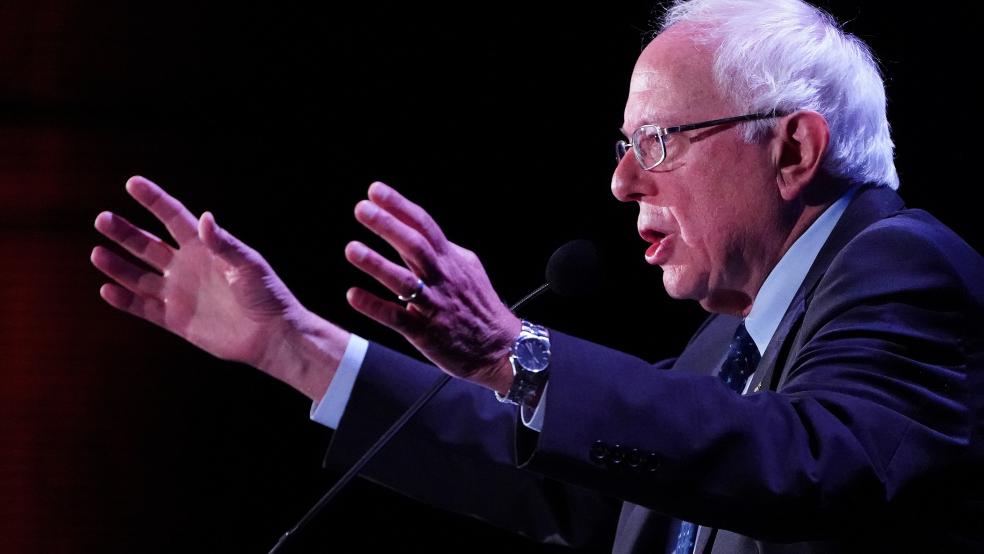Bernie Sanders is taking the idea of student debt cancelation to a new level. The Vermont senator and Democratic presidential candidate unveiled a plan on Monday that would have the U.S. government pay to entirely eliminate the $1.6 trillion in student debt held by 45 million Americans.
The Sanders plan is broader than debt-forgiveness proposals from other Democratic presidential contenders, including Sen. Elizabeth Warren of Massachusetts and Julián Castro of Texas. Warren has proposed $640 billion in student loan cancellation, including up to $50,000 in debt for people earning under $100,000. But Warren’s plan offers no relief to those who earn more than $250,000.
Sanders’ proposal, which would also make tuition free at public universities, community colleges and trade schools, would be paid for by a new Wall Street tax that the Sanders campaign says will raise some $2.4 trillion over 10 years. Sanders would place a 0.5% tax on stock trades, a 0.1% tax on bond trades and a 0.005% fee on derivative trades.
“Wall Street speculators nearly destroyed the economy a decade ago, and the American people bailed them out,” Sanders said Monday. “Now it's time for Wall Street to come to the aid of the middle class of this country.”
Other experts put the total cost of Sanders’ plan at $3 trillion, and some suggest that his Wall Street tax would raise less than his camp projects. Critics of student debt forgiveness proposals, including both conservatives and some Democrats, argue that they would disproportionately benefit higher-educated Americans, who tend to have higher incomes — and thus would amount to a giant welfare program for the upper-middle class.
“The cost will march toward $3 trillion and benefit a lot of wealthy families and future high-earners,” Brian Riedl, an analyst at the Manhattan Institute, a libertarian-leaning think tank, told The Washington Post, which first reported the Sanders plan. “Of all problems requiring a $3 trillion federal expenditure, the college costs of middle- and upper-class college graduates seem lower-priority.”
But proponents say that paying for student debt relief by taxing the affluent will reduce inequality, stimulate the economy and help lower-income Americans advance financially by freeing up those with heavy debt burdens to do things like buy homes.
Slate’s Jordan Weissmann suggests that, as generous as it is, the Sanders plan doesn’t go far enough:
“The problem with Sanders’ approach is that while it would forgive a lot of graduate school debt sitting on the books today, it does little to address the problem of graduate school debt going forward. His bill would cap interest rates on all student loans at 1.88 percent which, sure, would be helpful. But it wouldn’t lessen the amount students need to borrow in the first place, and that’s the more serious issue.”





